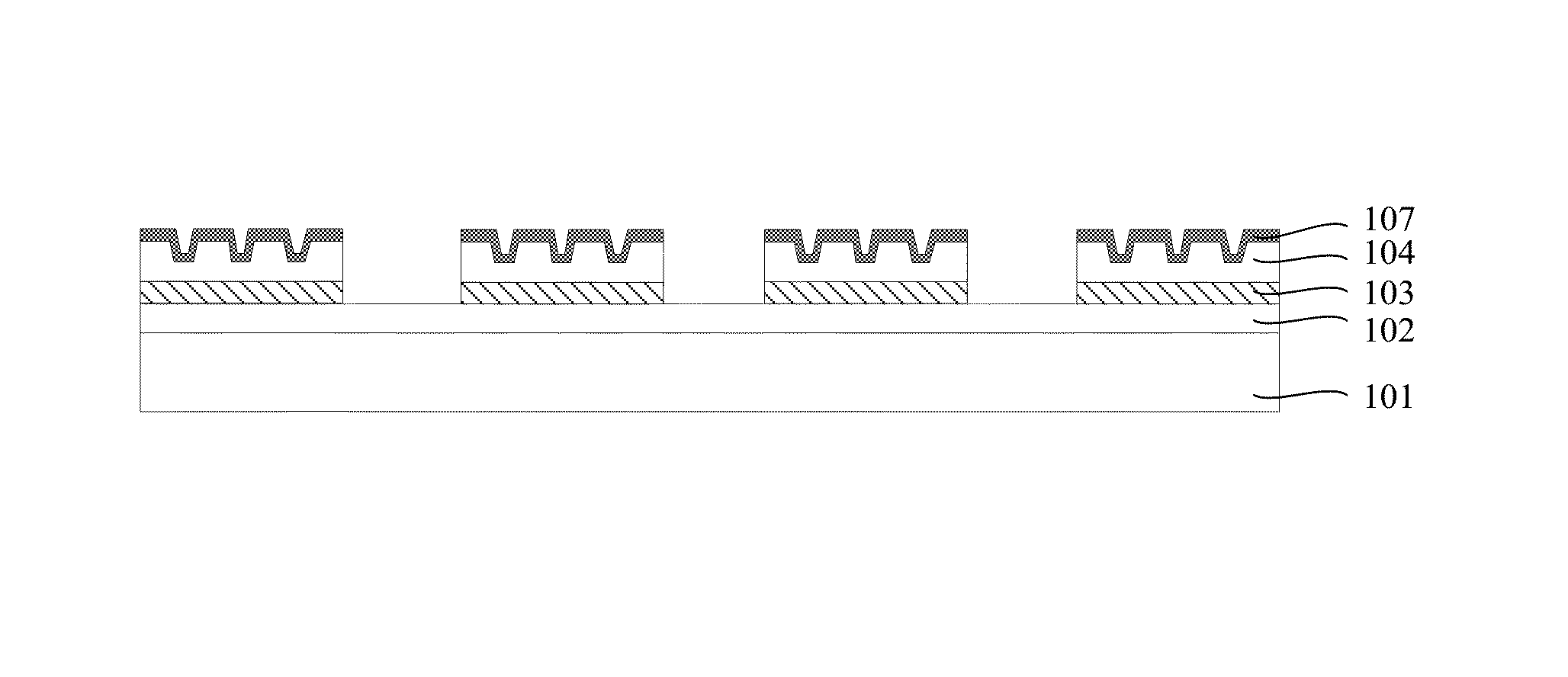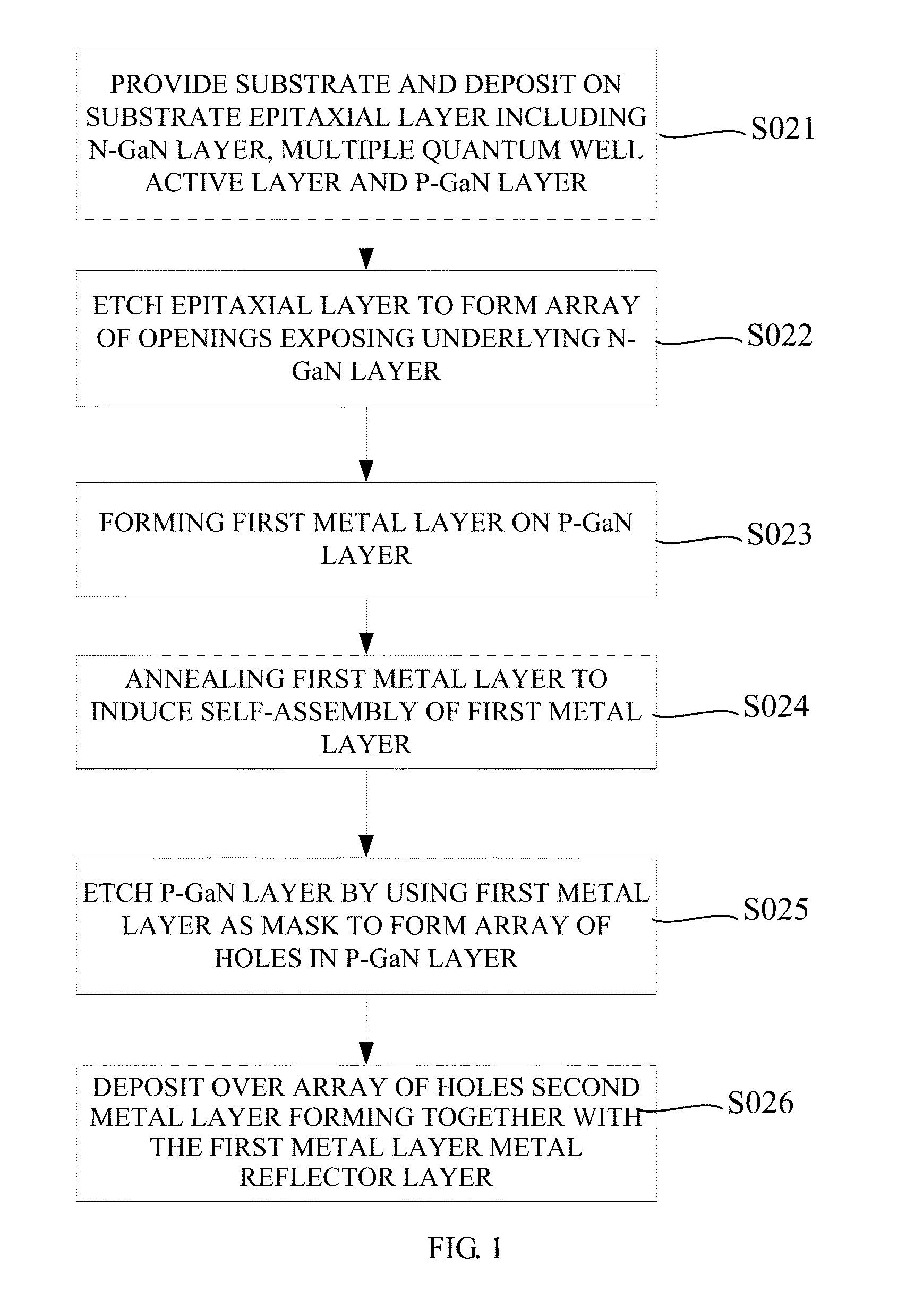Flip-chip LED and fabrication method thereof
a technology of flip-chip led and fabrication method, which is applied in the direction of basic electric elements, electrical apparatus, and semiconductor devices, can solve the problems of reduced light extraction efficiency, limited material thickness, and low concentration of hole carriers, and achieve the effect of improving the light extraction efficiency of led
- Summary
- Abstract
- Description
- Claims
- Application Information
AI Technical Summary
Benefits of technology
Problems solved by technology
Method used
Image
Examples
Embodiment Construction
[0030]As has been mentioned in the Background section, the existing metal reflector layer still has impact on the light extraction efficiency of the flip-chip LED. The present invention provides a flip-chip LED and a fabrication method thereof. In the fabrication method of the flip-chip LED, a first metal layer is formed and annealed for self-assembly and then a p-type GaN layer is etched by using the first metal layer as a mask. Afterward, a second metal layer is deposited, which, together with the first metal layer, forms an uneven metal reflector layer which results in an improved light extraction efficiency of the flip-chip LED.
[0031]The present invention will be described in greater detail in the following description demonstrating preferred embodiments of the invention, which are to be read in conjunction with the accompanying drawings. Those of skill in the art should, in light of the present disclosure, appreciate that many changes can be made in the specific embodiments dis...
PUM
| Property | Measurement | Unit |
|---|---|---|
| thickness | aaaaa | aaaaa |
| temperature | aaaaa | aaaaa |
| thickness | aaaaa | aaaaa |
Abstract
Description
Claims
Application Information
 Login to View More
Login to View More - R&D
- Intellectual Property
- Life Sciences
- Materials
- Tech Scout
- Unparalleled Data Quality
- Higher Quality Content
- 60% Fewer Hallucinations
Browse by: Latest US Patents, China's latest patents, Technical Efficacy Thesaurus, Application Domain, Technology Topic, Popular Technical Reports.
© 2025 PatSnap. All rights reserved.Legal|Privacy policy|Modern Slavery Act Transparency Statement|Sitemap|About US| Contact US: help@patsnap.com



